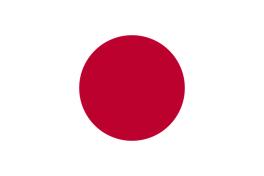Donate to Support Supercluster
Your support makes the Astronaut Database and Launch Tracker possible, and keeps all Supercluster content free.
SUPPORTSupercluster on Patreon
Your support makes the Astronaut Database and Launch Tracker possible, and keeps all Supercluster content free.
SUPPORTThis goes
to space
QZS-1R
QZS-1R is a replacement satellite for the QZS-1 satellite which was launched in 2010. This satellite will complete the original constellation with plans of a total of 7 satellites used by 2024.
The primary purpose of QZSS is to increase the availability and reach of GPS in Japan's numerous urban canyons, where only satellites at very high elevations can be used.
A secondary function is performance enhancement, increasing the accuracy and reliability of GPS navigation solutions.
Image: Government of Japan
On this
rocket
H-IIA (202)
The H-IIA Launch Vehicle is a high-performance rocket consisted from a First stage, Second stage, fairing, one or two pairs of Solid Rocket Boosters (SRB-As). The propulsion system runs on liquid hydrogen and liquid oxygen. Two models are produced, the standard type H2A202 with two SRB-A's and the H2A204 type with four SRB-A's attached.
The First stage of the H-IIA Launch Vehicle consists of a high-performance LE-7A engine, an engine section, a propulsion system tank charged with liquid hydrogen and liquid oxygen, a center section connecting the tanks, and an interstage section mating the First and Second stages. A Solid Rocket Booster (SRB-A) has also been newly developed to boost the thrust from the main engine. Two or four SRB-A's installed on the H-IIA Launch Vehicle are attached to the First stage.
The Second stage consists of a highly reliable LE-5B engine, a propulsion system tank charged with liquid hydrogen and liquid oxygen, on-board electronic devices, etc. As a key feature for launch mission support, the LE-5B engine can be ignited up to three times.
Credit: Mitsubishi Heavy Industries
From this
launch site
LA-Y1 - Tanegashima Space Center - Japan
LA-Y1
Launch Area - Yoshinobu Launch Complex 1 (LA-Y1 for short) is part of a two-launch-pad area of the Tanegashima Space Center used for the H-II family of rockets.
The pad is located just 190 meters (624 ft) from neighboring pad LA-Y2.
The overall two-pad Yoshinobu Launch Complex is the northernmost launch site of the Tanegashima Space Center.
Rockets are assembled and processed vertically in the vehicle assembly building before technicians roll them out to the launch pad, a journey of 365 meters.
LA-Y1 hosted its first launch in February 1994 and has been active ever since.
Tanegashima Space Center
The Tanegashima Space Center is Japan's largest launch center and gets its name from the island Tanegashima it is located on.
Located in southern Japan, it is part of the overall Range, which handles Japan’s orbital launches.
The center opened for operations in October 1969 as part of the National Space Development Agency of Japan (NASDA). It is now owned by JAXA.
Tanegashima includes the Yoshinobu Launch Complex for the H-IIA and H-IIB rockets, a Vehicle Assembly Building, a Spacecraft Test and Assembly Building, and the Takesaki Range Control Center.
Image: Wikipedia
Here's where to view QZS-1R
Viewing Sites
- Tanegashima Space Center Observation Deck
GET THE SUPERCLUSTER APP
THE SUPERCLUSTER PODCAST
A podcast exploring the amazing milestones that changed space history, the wildest ideas that drive our future, and every development in this new Golden Age of Space.
Donate to support
Your support makes the Astronaut Database and Launch Tracker possible, and keeps all Supercluster content free.
SupportCOPYRIGHT 2021 SUPERCLUSTER LLC

